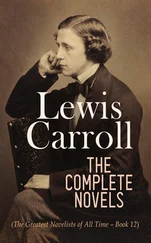The purpose of a gesture is to carry your thought and feeling into the minds and hearts of your hearers; this it does by emphasizing your message, by interpreting it, by expressing it in action, by striking its tone in either a physically descriptive, a suggestive, or a typical gesture—and let it be remembered all the time that gesture includes all physical movement, from facial expression and the tossing of the head to the expressive movements of hand and foot. A shifting of the pose may be a most effective gesture.
What is true of gesture is true of all life. If the people on the street turn around and watch your walk, your walk is more important than you are—change it. If the attention of your audience is called to your gestures, they are not convincing, because they appear to be—what they have a doubtful right to be in reality—studied. Have you ever seen a speaker use such grotesque gesticulations that you were fascinated by their frenzy of oddity, but could not follow his thought? Do not smother ideas with gymnastics. Savonarola would rush down from the high pulpit among the congregation in the duomo at Florence and carry the fire of conviction to his hearers; Billy Sunday slides to base on the platform carpet in dramatizing one of his baseball illustrations. Yet in both instances the message has somehow stood out bigger than the gesture—it is chiefly in calm afterthought that men have remembered the form of dramatic expression. When Sir Henry Irving made his famous exit as "Shylock" the last thing the audience saw was his pallid, avaricious hand extended skinny and claw-like against the background. At the time, every one was overwhelmed by the tremendous typical quality of this gesture; now, we have time to think of its art, and discuss its realistic power.
Only when gesture is subordinated to the absorbing importance of the idea—a spontaneous, living expression of living truth—is it justifiable at all; and when it is remembered for itself—as a piece of unusual physical energy or as a poem of grace—it is a dead failure as dramatic expression. There is a place for a unique style of walking—it is the circus or the cake-walk; there is a place for surprisingly rhythmical evolutions of arms and legs—it is on the dance floor or the stage. Don't let your agility and grace put your thoughts out of business.
One of the present writers took his first lessons in gesture from a certain college president who knew far more about what had happened at the Diet of Worms than he did about how to express himself in action. His instructions were to start the movement on a certain word, continue it on a precise curve, and unfold the fingers at the conclusion, ending with the forefinger—just so. Plenty, and more than plenty, has been published on this subject, giving just such silly directions. Gesture is a thing of mentality and feeling—not a matter of geometry. Remember, whenever a pair of shoes, a method of pronunciation, or a gesture calls attention to itself, it is bad. When you have made really good gestures in a good speech your hearers will not go away saying, "What beautiful gestures he made!" but they will say, "I'll vote for that measure." "He is right—I believe in that."
Gestures Should Be Born of the Moment
The best actors and public speakers rarely know in advance what gestures they are going to make. They make one gesture on certain words tonight, and none at all tomorrow night at the same point—their various moods and interpretations govern their gestures. It is all a matter of impulse and intelligent feeling with them—don't overlook that word intelligent . Nature does not always provide the same kind of sunsets or snow flakes, and the movements of a good speaker vary almost as much as the creations of nature.
Now all this is not to say that you must not take some thought for your gestures. If that were meant, why this chapter? When the sergeant despairingly besought the recruit in the awkward squad to step out and look at himself, he gave splendid advice—and worthy of personal application. Particularly while you are in the learning days of public speaking you must learn to criticise your own gestures. Recall them—see where they were useless, crude, awkward, what not, and do better next time. There is a vast deal of difference between being conscious of self and being self-conscious.
It will require your nice discrimination in order to cultivate spontaneous gestures and yet give due attention to practise. While you depend upon the moment it is vital to remember that only a dramatic genius can effectively accomplish such feats as we have related of Whitefield, Savonarola, and others: and doubtless the first time they were used they came in a burst of spontaneous feeling, yet Whitefield declared that not until he had delivered a sermon forty times was its delivery perfected. What spontaneity initiates let practise complete. Every effective speaker and every vivid actor has observed, considered and practised gesture until his dramatic actions are a sub-conscious possession, just like his ability to pronounce correctly without especially concentrating his thought. Every able platform man has possessed himself of a dozen ways in which he might depict in gesture any given emotion; in fact, the means for such expression are endless—and this is precisely why it is both useless and harmful to make a chart of gestures and enforce them as the ideals of what may be used to express this or that feeling. Practise descriptive, suggestive, and typical movements until they come as naturally as a good articulation; and rarely forecast the gestures you will use at a given moment: leave something to that moment.
Avoid Monotony in Gesture
Roast beef is an excellent dish, but it would be terrible as an exclusive diet. No matter how effective one gesture is, do not overwork it. Put variety in your actions. Monotony will destroy all beauty and power. The pump handle makes one effective gesture, and on hot days that one is very eloquent, but it has its limitations.
Any Movement that is not Significant, Weakens
Do not forget that. Restlessness is not expression. A great many useless movements will only take the attention of the audience from what you are saying. A widely-noted man introduced the speaker of the evening one Sunday lately to a New York audience. The only thing remembered about that introductory speech is that the speaker played nervously with the covering of the table as he talked. We naturally watch moving objects. A janitor putting down a window can take the attention of the hearers from Mr. Roosevelt. By making a few movements at one side of the stage a chorus girl may draw the interest of the spectators from a big scene between the "leads." When our forefathers lived in caves they had to watch moving objects, for movements meant danger. We have not yet overcome the habit. Advertisers have taken advantage of it—witness the moving electric light signs in any city. A shrewd speaker will respect this law and conserve the attention of his audience by eliminating all unnecessary movements.
Gesture Should either be Simultaneous with or Precede the Words—not Follow Them
Lady Macbeth says: "Bear welcome in your eye, your hand, your tongue." Reverse this order and you get comedy. Say, "There he goes," pointing at him after you have finished your words, and see if the result is not comical.
Do Not Make Short, Jerky Movements
Some speakers seem to be imitating a waiter who has failed to get a tip. Let your movements be easy, and from the shoulder, as a rule, rather than from the elbow. But do not go to the other extreme and make too many flowing motions—that savors of the lackadaisical.
Put a little "punch" and life into your gestures. You can not, however, do this mechanically. The audience will detect it if you do. They may not know just what is wrong, but the gesture will have a false appearance to them.
Читать дальше












